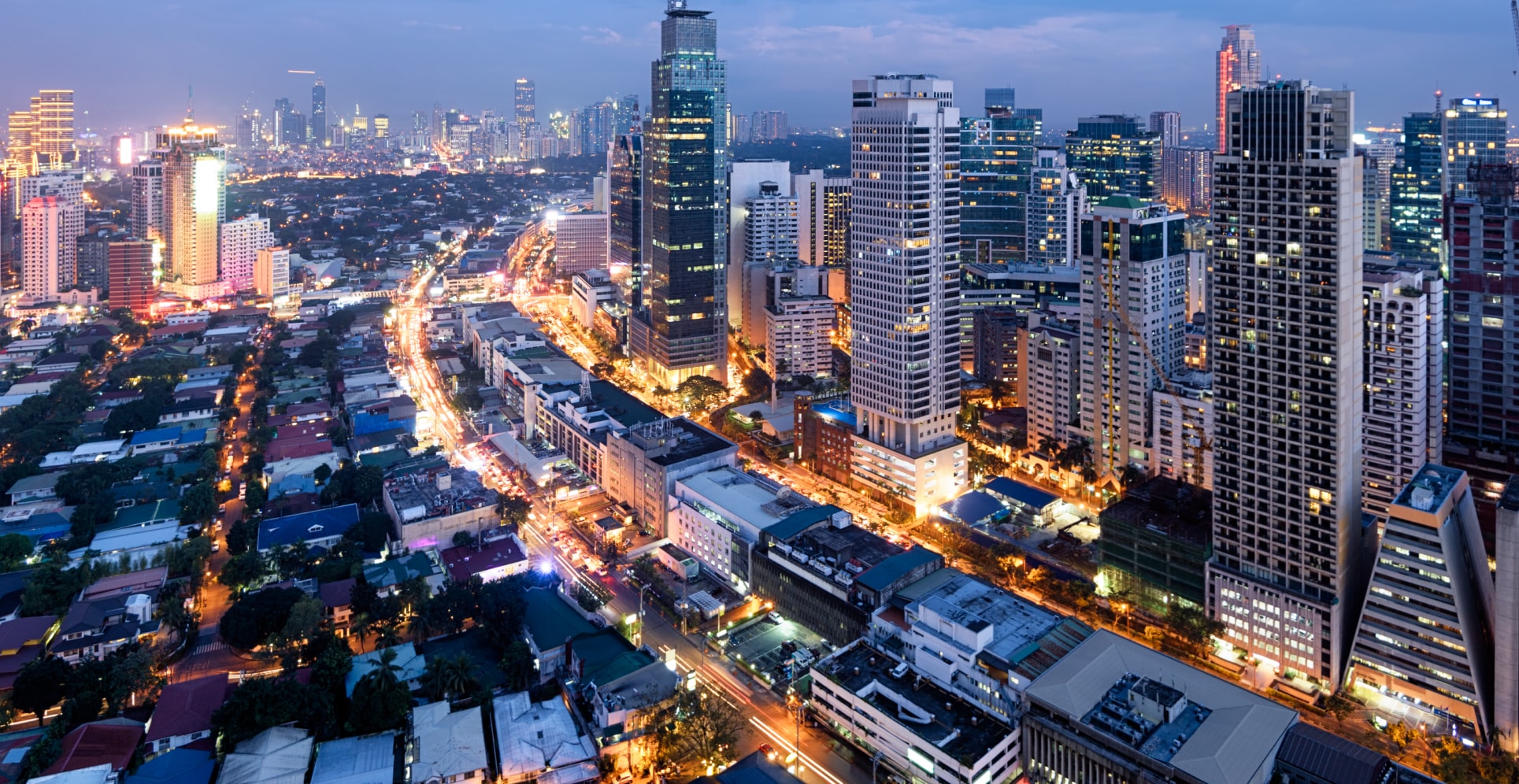Today our cities consume almost 80% of the world’s energy and emit 60% of the world’s greenhouse gas emissions. 80% of global GDP is also generated from urban-based economic activity. And despite the disruption brought on by the COVID-19 pandemic, urbanization of our societies will continue, and most of the population growth will occur in cities between now and 20301.
Importantly, less than 40% of carbon emissions cuts required to deliver net zero will be delivered using today's measures2. This, coupled with evidence of a rapidly narrowing window to avoid the most severe and irreversible impacts of climate change3, sets out the magnitude of opportunity for innovation, and the role digital advancements could play.
Urban infrastructure serves as the backbone for thriving societies, and post-pandemic recovery efforts have led to an increase in infrastructure spending that will support these societies during the most vital years of our collective efforts to reach net zero. Additionally, the pressure on urban infrastructure will be more profound in this same period, as our urban places and spaces are being impacted by climate change much quicker than many economies had prepared for4.
Intelligent design of this urban infrastructure is therefore essential and presents an invaluable opportunity to reshape our urban landscapes in ways that prioritize people and sustainable development, laying the foundation for resilient and thriving cities of the future.
Mark McKenna, Global Sustainability Director for Arcadis, interviewed Deepak Darda, Global Director of Innovation at the recently acquired Arcadis IBI Group for his insights on the role of innovation and digitization for delivering resilient urban environments of the future.
Mark: Deepak, you’ve spent over 20 years driving change through technology in cities and other infrastructure projects. Firstly, tell me about your role as Global Innovation Director, and your experience delivering sustainable outcomes in urban environments.
Deepak: As the Global Director of Innovation at IBI, I focus on bringing the technology lens to all the great work that my colleagues are doing. We design world class buildings, workspaces and infrastructure, and the key focus for us from a technology perspective is how we carry that design work forward to positively impact the full life cycle of the asset. We embrace tech ecosystem partnerships and have made investments in innovative companies like SWTCH - which is an EV charging network provider - and ESI, which has AI based air quality monitoring sensors.
We’re excited to be bringing our expertise to Arcadis as we transition into the global business, enhancing our global expertise in sustainable architecture and urbanism.
Mark: Innovation is fast becoming an over-used phrase in today’s world, particularly when many of the solutions we need to deliver better cities and places already exist. So what does digital innovation mean for urbanism and architecture?
Deepak: Innovation is crucial for urbanism and architecture. Innovation helps us find creative solutions to challenges like population growth and resource management, making cities more livable and more fair. In architecture, innovation means using imaginative designs, sustainable practices, and advanced technologies to create buildings that fit their surroundings, work efficiently, and provide better experiences for people. It's all about pushing boundaries, thinking outside the box, and improving the way we build and live in our cities.
Mark: From your perspective, what are the current trends shaping the field of urban planning and design?
Deepak: There are several current trends that are shaping the way cities are being developed. One important trend is the concept of 15-minute cities, which focuses on creating neighborhoods where residents can easily access essential amenities within a short walk or bike ride. This trend aims to make daily life more convenient and promote a healthier, car-free lifestyle.
Another significant trend is the emergence of connected autonomous vehicles (CAVs). These vehicles have the potential to revolutionize transportation by reducing congestion, improving safety, and providing more mobility options. Urban planners are now considering how to integrate CAVs into city infrastructure, including changes to street design and parking requirements.
Additionally, the shift towards hybrid work arrangements, brought about by the COVID-19 pandemic, is also influencing urban planning and design. As more people work remotely or have flexible schedules, there is a growing need for mixed-use developments that combine residential, commercial, and recreational spaces. This fosters vibrant communities where people can live, work, and enjoy leisure activities in close proximity.
Mark: How have technological advancements influenced recent trends in architecture and urban development?
Deepak: Technological advancements are playing a significant role in shaping recent trends in architecture and urban development. Here are a few ways we have been using them:
-
Parametric Design: We have been utilizing computation design tools that enable us to create multiple concurrent design options. This approach not only helps us generate options based on constraints but also takes various data into consideration. It empowers us to explore different possibilities and optimize designs based on specific criteria and requirements.
-
AR/VR Implementation: Another technology we have been leveraging is augmented reality (AR) and virtual reality (VR). These immersive technologies have been instrumental in training people on facilities that we design even before their commissioning. By providing a realistic virtual experience, AR/VR significantly reduces the time required for training after the facility is built. This enhances efficiency and improves user familiarity with the space.
-
IoT Sensors and Space Utilization: The deployment of IoT sensors has revolutionized the way we gather data and make design decisions. For instance, through the utilization of IoT sensors, we can collect valuable data on space utilization. This data helps us design flexible spaces that can adapt to different needs and optimize the efficient use of available resources.
Mark: What are the current trends in urban resilience planning and how are cities adapting to climate change impacts?
Deepak: Cities are leveraging data and technology for risk assessment, vulnerability mapping, and scenario planning. They are using spatial data and weather data to assess flood risks and incorporating data and technology into resilience planning. Real time information systems like 511 systems are implemented to provide information to citizens in case of a climate catastrophe. Cities are investing in resilient infrastructure to withstand climate-related hazards. This includes upgrading buildings, implementing flood management systems, and constructing coastal protection structures.
Mark: Prior to being the Global Innovation Director, you had a successful stint of building an urbanism practice in India working across technology initiatives in transportation, urban planning and smart cities. Tell me more about your work there, and smart cities in particular.
Deepak: Absolutely, during my time in India, we were approached by Bhubaneshwar to help them support the city’s application for the “100 Smart Cities” challenge. Given our diversified practice, we were able to put forward a comprehensive vision that would transform it into a child friendly city, solve the transportation challenges and provide a unified control center to monitor and control various activities, especially emergency response. These solutions were derived through extensive public consultation. Bhubaneshwar was awarded the first position in the 100 smart city challenge, and we got further mandate to transform the city both from the urban fabric perspective as well as technology interventions.
The technology solutions and designs that the team came forward with were integrated with how we address urban design needs. For example, to make the city child friendly, you have to see it from the eyes of a child, which means that pelican signals need to be placed at a height convenient to a child, rather than just for adults. The city light poles were designed to incorporate multiple technologies such as wi-fi, environmental sensors etc., but all the elements were blended into a single pole design and reduced the number of poles required. Overall, the technology deployment program was about $140M+. This unified control center was the lifeline for the city during two severe flooding events and then during the pandemic.
1The World Counts. Urban population statistics
2U.N Habitat. World cities report 2022
3IPCC.AR6 Summary for Policy-makers, Section C, C-1 Responses in the Near Term
4IPCC.AR6 Summary for Policy-makers, Section A, A2 Observed changes and impacts
5World Health Organisation (WHO): Healthy Cities [undated]
6Cities Alliance: Cities without slums
7U.S Oceanic and Atmospheric Administration (NOAA): The human climate niche explained
8Cities Today. Urban sprawl triples public service costs






